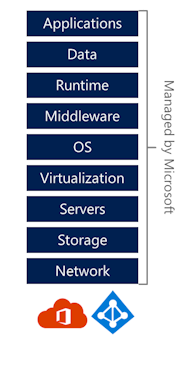Azure Solutions Architect
NWORKIT develops and implements solutions and services in a cloud and/or hybrid infrastructure performed on Microsoft Azure. An Azure solution architect takes advantage of Cloud abilities to help companies streamline and improve the performance of their operations.
The use of cloud services should not be focused only on monetary value, but through the following five pillars: reliability, cost optimization, operational excellence, performance efficiency and safety.
Cloud computing service models
On-premises
A company has its data processing center that may contain physical or virtual servers, physical or virtual data storage devices, physical or virtual network management and more.
All physical or virtual components, software and licensing, data, user accounts and identities are the full responsibility of the company.
It also includes electrical system, cooling system among others and their redundancies.
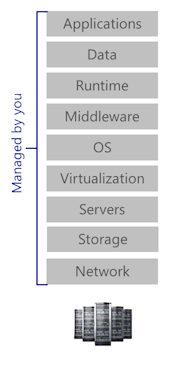
Infrastructure-as-a-Service (Iaas)
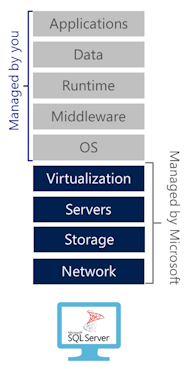
This model provides access to a virtual infrastructure that may contain servers, networks, storage devices, and more in the cloud. That is, it can migrate physical infrastructure to a virtual cloud infrastructure.
The company is responsible for the management, monitorization, support and backup of the virtual server, virtual network, and all the applications contained.
The company is responsible for all contained data, their security copy, user accounts and identities, and all security.
All physical and virtual hardware is the responsibility of Azure. In addition, Azure is responsible for the electrical system, refrigeration among others and its redundances.
Containers-as-a-Service (CaaS)
This model is a bit similar to the Infrastructure-as-a-Service, but the operating system is fully managed by Azure. Instead of implementing servers is used container which is a software package that is prepared to run it internal, hybrid or cloud infrastructure. A container includes all dependencies to run.
This model is widely used by software developers to create microservices but also by system administrators to migrate applications to the cloud.
The company is responsible for all contained data, their security copy, user accounts and identities, and all security.
All physical and virtual hardware is the responsibility of Azure. In addition, Azure is responsible for the electrical system, refrigeration among others and its redundances.
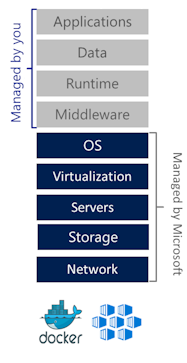
Platform-as-a-Service (PaaS)
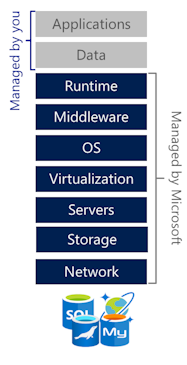
This model provides simplicity of all infrastructure management to be fully managed by Azure. This means that the operating system and all the software needed to run a framework for an application is always up to date and the company cannot manually install any software that the company needs.
This model is widely used by software developers to provide web applications, web services, and more. It is not compatible with obsolete frameworks, in the end of life or without the manufacturer's support.
The company is responsible for all contained data, their security copy, user accounts and identities, and all security.
All physical and virtual hardware is the responsibility of Azure. In addition, Azure is responsible for the electrical system, refrigeration among others and its redundances.
Software-as-a-Service (SaaS)
This model provides a service that lives and is completely managed in the cloud, for example Microsoft 365 or Dropbox. The company is not holding the service and does not have full-service management, for example maintenance or updates are managed by the service manufacturer.
All data entered in a SAAS solution is in the cloud but that does not mean that the service itself does copies of safety. There are safety copies, but it is exclusively for replacement of the service provided and the customer never has access to them.
The company is responsible for all contained data, their security copy, user accounts and identities, and all security.
All physical and virtual hardware is the responsibility of Azure. In addition, Azure is responsible for the electrical system, refrigeration among others and its redundances.
